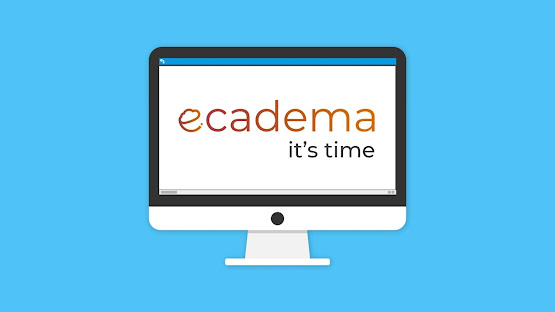Learn about - Best Things to Know About Studying Art and Design in 2022
Most of the learners are wondering what it's like to take Art and Design courses remotely? What kind of online professional courses platforms are offering, what’s their course structure, or which teaching format do they follow? Through this blog, we will try to solve all the worrisome points of students who want to switch to online learning. Amidst the Corona pandemic, mostly every professional or degree course has shifted to online mode in response to the pandemic-induced lock-down, Art courses are also taught remotely- but typically arts is the subject that is being relatively taught by a hands-on approach and is considered as a practical area of study.
Two majors offer different career
paths, including an art teacher, art gallery entrepreneur, graphic designer,
animator, web designer, or another role related to design.
With ecadema, Earn your Art and
Design Credentials From Anywhere in the World:
ecadema ,a professional online learning platform
that offers arts and design online professional courses, which are
accredited and certified, content taught by instructors is custom-built content
through top industry professionals to give you the flexibility to earn your
certification on your own terms.
ecadema, an interactive online
learning platform offers one-to-one tutor support
online through video live sessions by industry experts of this field.
Due to the paradigm shift in the
education sector, we have introduced one-to-one interactive learning
sessions where students can learn life in a dedicated time slot with the tutor
to brainstorm and refine their ideas, also exposing them to one-to-one
interaction to receive regular feedback.
Also, synchronous learning
sessions provided at ecadema platform enable students to raise any concerns
and can clear their doubts immediately, receiving further guidance in these
additional support sessions.
Unlike traditional online courses
that offer asynchronous learning, academia offers virtual onsite courses with
the asynchronous learning method that works best for you.
Art
vs. Design: What’s the difference?
There is a thin blurred line between
art and design. Both are appealing, aesthetic, and skill or talent-based
creative courses. The Art and Design field is highly creative and interesting,
always motivated and inspired by a message, thought, idea, place, or
objective.
Art starts with a blank canvas.
Design should be compelling and appealing, should leave audiences with
sentiments or actions. Art should leave audiences with a multitude of
impressions as art uses aesthetics and self-expression in a creative and
compelling way.
Art is often expressing an inner
feeling and showing that to the world design can be a graphic design executed
on a broad spectrum like billboards, logos, magazine layouts, websites and so
much more. Art can be showcased through platforms such as sculpture, video,
drawing, painting, photography, and other forms.
Online Programs at ecadema equips
you with Future-Ready Skills from Industry Experts:
All of our instructors are
knowledgeable industry experts or professionals who bring foundational
knowledge, as well as their personal experience and perspective, into their
online courses.
Exclusive and Custom Content
Course content is exclusive and
innovative, often classes are a mix of lecture and written content, recorded
audio, interactive slideshows, and hands-on work through live video,
whiteboards, etc. The course structure designed by industry professionals to
create the same pattern of curriculum as that of on-campus students.
We
provide one-to-one online professional courses
Our online professional courses offer one-to-one sessions settings, discussion forums, or
communities where instructors and trainees can freely share thoughts and revelations,
post-work, provide or receive helpful critique, and collaborate with others,
pushing artistic growth with peers and faculty.
Dedicated trainers at ecadema follow
hands-on-approach to help you in receiving the best learning experience.
Additionally, trainees will have access to the demonstration videos, one-on-one
sessions with your trainer, career & mentor chats, and more.
online professional courses >> HOME







